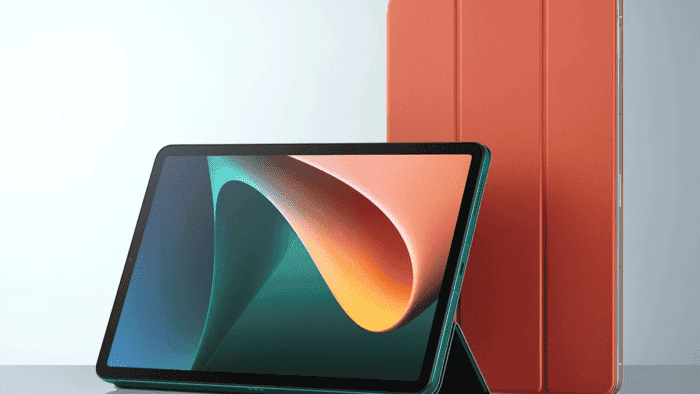The first reports that Xiaomi Mi Pad 5 could run Windows 11 appeared last fall and since then the OS optimization process on the tablet has advanced significantly due to the work of enthusiasts. Now Xiaomi Mi Pad 5 with Windows 11 for Arm has been tested in the Geekbench benchmark.
Mi Pad 5 running Windows 11
Apparently, the Xiaomi Mi Pad 5 will never receive official support for Windows 11 for Arm, so some components of the tablet will not receive drivers. However, this did not stop enthusiasts from installing Windows 11 for Arm on a Xiaomi tablet and testing it on Geekbench.

Recall that Mi Pad 5 (2021) is a productive device that is built on the basis of a powerful Qualcomm Snapdragon 860 (SM8150-AC) processor and runs on Android 11. The Adreno 640 accelerator is responsible for graphics processing. The configuration is complemented by 6 GB of RAM and storage for 128 GB. The tablet uses an IPS-display with a resolution of 2560 × 1600 pixels.

While testing the Mi Pad 5 with Windows 11 for Arm in the Geekbench 5 benchmark, the tablet scored 456 points in single-core mode, while in multi-core mode the result rose to 1992 points. Compared to x86-compatible processors, the result is not very impressive.

However, if these results are compared with the performance of the Snapdragon 8cx platform designed for Windows devices, the performance degradation will not exceed 20-30%. This result is not bad at all, especially considering that there is simply no official support for the Snapdragon 860 in Windows 11 and there is still a long list of components with missing drivers.

Here is a reminder of the specifications of the Xiaomi Mi Pad 5 and 5 Pro tablets.
Xiaomi Mi Pad 5 and Mi Pad 5 Pro specifications
- 11-inch (2560 x 1600) WQXGA 16:10 display with 120Hz refresh rate, 240Hz touch sampling rate, HDR 10, Dolby Vision; TrueTone True color display, Hardware-level blue light reduction, TUV Rheinland low blue light hardware scheme certification
- Mi Pad 5 – Up to 2.96GHz Octa-Core Snapdragon 860 7nm Mobile Platform with Adreno 640 GPU
- Mi Pad 5 Pro – Octa Core (1 x 3.2GHz + 3 x 2.42GHz + 4 x 1.8GHz Hexa) Snapdragon 870 7nm Mobile Platform with Adreno 650 GPU
- 6GB LPDDR4X (LPDDR5 in Pro) RAM with 128GB / 256GB UFS 3.1 storage; 8GB RAM LPDDR5 with 256GB UFS 3.1 storage (Mi Pad 5 Pro 5G)
- Android 11 with MIUI 12.5
- 13MP (50MP 1/2.5″ sensor in Mi Pad 5 Pro 5G) rear camera; 5MP depth sensor (Mi Pad 5 Pro only), 4K video recording
- 8MP front-facing camera
- Mi Pad 5 Dimensions: 254.69x 166.25mmx6.85mm; Weight: 511g
- Mi Pad 5 Pro Dimensions: 254.69x 166.25×6.86mm; Weight: 515g / 518g (Mi Pad 5 Pro 5G)
- USB Type-C audio, Dolby Atmos, 4 Speakers in Mi Pad 5, 8 Speakers in Mi Pad 5 Pro
- 5G SA / NSA, 4G LTE (Optional), Wi-Fi 802.11 ac / ax (2.4GHz + 5GHz); Bluetooth 5.0 (5.2 in Pro), GPS / GLONASS / BeiDou / GALILEO / QZSS, USB Type-C
- Mi Pad 5 – 8,720mAh battery with 33W fast charging for 0 to 100% in 91 min
- Mi Pad 5 Pro – 8,600mAh battery with 67W fast charging for 0 to 100% in 67 min






interesting…not
I have actually just done my Lenovo Xiaoxin Pad Pro 2021 Snapdragon 870 6GB RAM 128GB ROM 11.5 Inch 2560*1600 OLED Android 11 OS Tablet with windows 11 on the SD card and added QualComm outbyte driver updater to get the rest of the drivers.
My setup is dual boot, didn't want to loose warranty.
What i noticed was when bench marking is windows depends on quality of SD card and SD card is 33% slower than internal memory.
I am thinking of loosing Android 11 in favor of windows 11 for the programs i use.
Updates later if anyone wants it?
interested in your performance and stability. thinking of doing this to a legion y700 snapdragon 870
I see that we have same specs except screen size, usb version and internal memory speed.
Overhaul you will have the same out-put as mine ie if you run a different Rom from external memory it will be 33% slower.
But on internal memory it's fine? I'm interested in gaming and I heard the performance is very much reduced since the drivers aren't official.